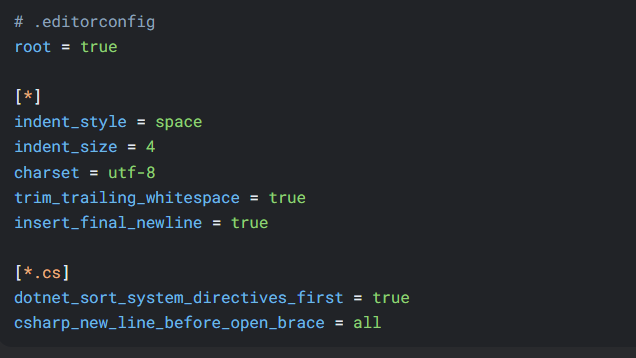Whenever Starting a new project Add an .editorconfig file to your solution right from the start! 🛠️
Why?
An EditorConfig file ensures every developer on your team follows the same coding conventions—whether they use Visual Studio, VS Code, Rider, or another IDE. It’s like a rulebook for your codebase, eliminating debates over tabs vs. spaces, indentation, naming, or formatting.
Key Benefits for Your Team:
=> Consistency First: Enforce coding styles (e.g., indent size, line endings, charset) across all files and contributors.
=> Fewer Code Review Hassles: Reduce time spent arguing over formatting. Focus on logic and architecture instead!
=> IDE-Agnostic: Works seamlessly with most editors—no more "But my IDE auto-formatted it!" excuses.
=> Built-In .NET Core Support: .NET SDKs natively recognize .editorconfig, making it easy to align with compiler warnings or code analysis rules.
=> Version Control Friendly: Commit the file to your repo, and everyone stays in sync.
How to Add It in 2 Minutes:
In Visual Studio: Right-click your project → Add → New Item → Search for “.editorconfig” → Choose the template.
Manually: Create a .editorconfig file at the solution root and define your rules.
DotNetCore #CodingStandards #DeveloperTips #SoftwareEngineering #TechCommunity #CleanCode #DevOps
Let’s build cleaner, more maintainable codebases—one config file at a time! 🚀



Top comments (0)